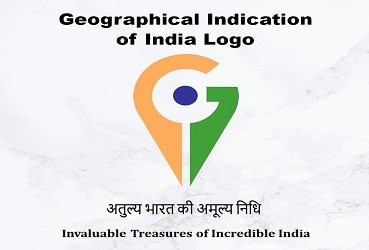Why in news?
Recently, the Commerce and Industry Minister unveiled a tricolour logo that is common for all Geographical Indications (GI), with a tagline “invaluable treasures of incredible India”.
What is Geographical Indication?
- GI indicates the ‘link’ between a product and the place it belongs to.
- The link could be the natural resources, climatic factor or human skills that render uniqueness to the product.
- The essential difference between GI and other intellectual properties (IP) is that, GI is a collective intellectual property right.
- It is thus owned by all the producers within the defined GI territory.
- Unlike this, the IPs like patent and trademark are owned by an individual or a business entity.
- So unlike the commercial use of patent that would benefit an innovator or a firm, the commercialisation of GI would benefit all the producers in the GI territory.
- It could promote tourism and rural development, and some of the Sustainable Development Goals - empowering women, fostering sustainable communities and reducing poverty.

What are the concerns in India in this regard?
- The potential of GI has not yet been realised in India.
- Procedure - Filing a GI application is a huge task that involves documenting historical evidences about the linkage of the product with the region.
- Also, the application has to be filed by an association or group of persons.
- So despite India's diversity in handicrafts or agricultural products, only about 320 products have so far been registered with the GI registry.
- Some of them include Kanchipuram saris, Darjeeling tea, Channapatna toys, Gir kesar mango, Sindhudurg and Ratnagiri Kokum, Kulu shawls, Ratlami sev, Pochampalli Ikat.
- Commercialisation - The efforts have so far mainly focused on the first step of filing GI applications (Part A of GI registration).
- Mere filing of the GI applications amounts to cultural accounting of regional products.
- But post registration activities in terms of utilising the GI certification as a marketing/branding tool has not been attempted in most products.
- This is due to limited awareness about GI in the country among producers, consumers and policy makers.
- Stakeholders - As pet the GI Act (1999), the term producer can include any one who ‘deals’/‘exploits’ the GI product.
- It could thus include a wide range of stakeholders including a trade facilitator, online marketer, who may or may not belong to the GI territory.
- But the registered proprietors of GI fail to identify the value chain and do not register the authorised users (Part B of GI registration).
- So the majority of the ‘producers’ (other stakeholders in the value chain) are unaware of the GI registration itself.
How could a logo help?
- After 15 years of the GI Registry coming into being, the GI logo that is common for all registered GIs is now in place.
- Logos convey a specific message to the consumers about the product, as the ISI or Agmark assures about the quality.
- Promotion of common GI logo will create an edge for GI products over similar products.
- It will also bring more awareness among consumers in distant markets as well and result in increased demand.
- It could enhance market access and preserve unique local economies, provided the producers benefit.
- This will check distress migration, promote biodiversity, prevent artisans and farmers leaving their livelihoods.
- Importantly, it will arrest the erosion of traditional knowledge and practices.
What are the challenges ahead?
- Mere unveiling of the logo may not serve any purpose for the producers of registered GIs.
- Determining the protocols for actual use by ‘producers’ and preventing the misuse of the logo are essential tasks.
- Enormous human efforts and financial resources are required to position the common GI logo so that it is used as a marketing tool.
- The GI logo needs to be widely popularised for consumers to associate it with the uniqueness and authenticity of GI products.
- But the shortfalls in Part B registration make it difficult to identify the authorised users and check GI infringement.
What should be done?
- The use of common GI logo has to be inclusive of all the stake holders in the value chain.
- At the product level, besides the producer organisations, other stakeholders like traders, processors, packagers, etc should also be organised into groups/associations.
- These different associations should work in unison in the actual use of the logo in all their transactions.
- This is essential to promote the sale of genuine GI products and design strategies to prevent the misuse of the logo.
- Assuring consumers on the authenticity of the product would go a long way in increasing the demand and production.
- Marketing - Efforts should start in India with all the State emporiums and handicraft hubs where products are on permanent display, to showcase GI products.
- There should be clear signboards with GI logos on the national highways or major bus/railway stations/airports about the GI Production centres in that region.
- Information about the sales points where the products may be procured should also be available.
Source: BusinessLine
